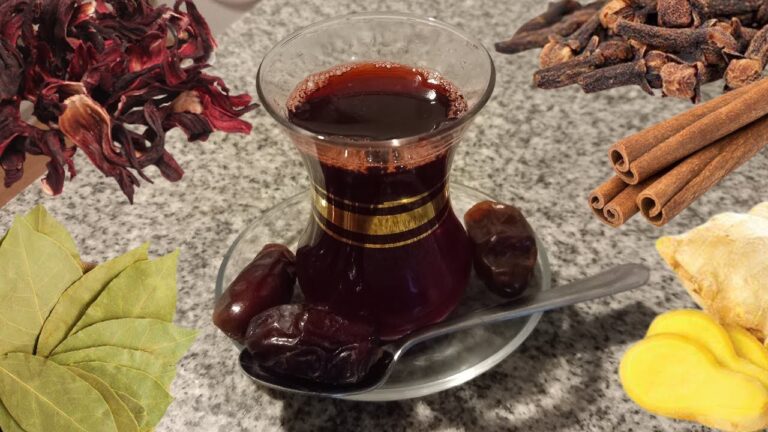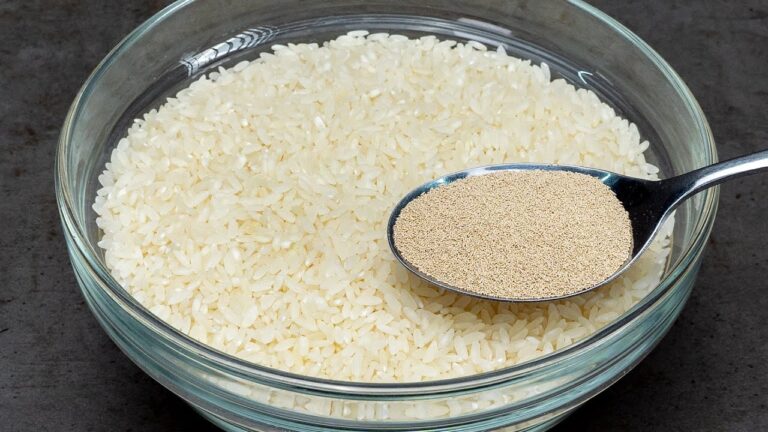Looking for a revitalizing and health-boosting drink? Look no further! The combination of mint, lemon, and ginger creates a delicious juice that not only hydrates but also aids digestion, boosts immunity, and aids in detoxification. This easy-to-make juice is perfect for a hot day or as a morning pick-me-up. Let’s go over the benefits and learn how to make this rejuvenating drink!
Benefits of Mint, Lemon, and Ginger Juice
Lemon:
- Rich in Vitamin C: Lemons are packed with vitamin C, supporting your immune system and helping your body fight off illness.
- Aids in Digestion: Lemon juice stimulates digestive enzymes, promoting healthy digestion and preventing bloating.
- Detoxifies: Lemon juice acts as a natural detoxifier, flushing out toxins from your body and supporting liver function.
Ginger:
- Anti-Inflammatory: Ginger contains powerful anti-inflammatory compounds, like gingerol, which reduce inflammation in the body.
- Boosts Metabolism: Ginger is known to boost metabolism, helping your body burn calories more efficiently.
- Soothes Digestive Issues: Ginger is a natural remedy for nausea, indigestion, and bloating.
Mint:
- Soothes the Stomach: Mint has calming properties that help soothe indigestion and promote healthy digestion by increasing bile flow.
- Freshens Breath: The cooling menthol in mint naturally freshens your breath while aiding digestion.
- Hydrating: Mint adds a refreshing flavor to the juice and promotes hydration, especially on hot days.
Ingredients
- 1 small handful of fresh mint leaves
- 1 lemon (juiced)
- 1-inch piece of fresh ginger (peeled and chopped)
- 2-3 cups water (or coconut water for extra hydration)
- Honey (optional, for sweetness)
- Ice cubes (optional, for serving)
Instructions
Prepare the Ingredients:
- Wash the mint leaves thoroughly.
- Peel and chop the ginger into small pieces.
- Juice the lemon and set it aside.
Blend the Ingredients:
- In a blender, add the fresh mint leaves, chopped ginger, lemon juice, and water (or coconut water). Blend everything together until smooth.
Strain the Juice(Optional):
- If you prefer a smoother juice, you can strain the mixture using a fine mesh strainer or cheesecloth to remove any pulp or fiber. This step is optional based on your texture preference.
Sweeten (Optional):
- Taste the juice. If you prefer it a bit sweeter, add a teaspoon of honey or your preferred natural sweetener and blend again.
Serve:
- Pour the juice into a glass over ice cubes for a refreshing drink. You can garnish with a slice of lemon or a few mint leaves for a decorative touch.
When to Drink
This mint, lemon, and ginger juice is versatile and can be enjoyed at various times of the day:
- Morning Boost: Start your day on the right note with this energizing and detoxifying juice.
- Post-Meal Digestive Aid: Drink it after meals to aid digestion and prevent bloating.
- Cooling Drink: It’s the perfect refreshing and hydrating drink for a hot day.
Health Benefits of Drinking Mint, Lemon, and Ginger Juice
Drinking this juice regularly brings a multitude of health benefits:
- Supports Weight Loss: This juice helps boost metabolism and promote fat burning, making it a great addition to your weight loss routine.
- Improves Digestion: Both ginger and mint are renowned for their digestive benefits, reducing bloating, indigestion, and discomfort.
- Detoxifies the Body: Lemon’s natural detoxifying properties help flush out toxins, promoting a healthy liver and digestive system.
- Boosts Immunity: The combination of vitamin C from lemon and the anti-inflammatory properties of ginger make this juice a powerful immune-boosting drink.
Tips for Best Results
To enhance your experience with this juice, consider the following tips:
- Serve Chilled: For the most refreshing experience, serve the juice chilled with ice cubes.
- Adjust Flavor: Customize the juice to your taste preferences. Add more ginger for a stronger flavor, or increase the amount of honey or natural sweetener for a sweeter taste.
In conclusion, this mint, lemon, and ginger juice is not only delicious and refreshing but also packed with wonderful health benefits. It’s a breeze to make, aids digestion, boosts metabolism, and keeps you hydrated. Incorporate this juice into your routine to enjoy its full range of health benefits!













